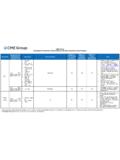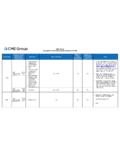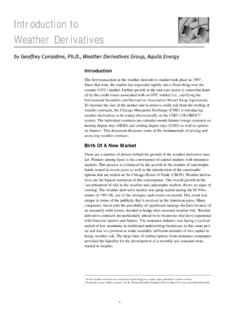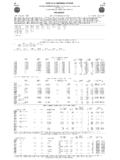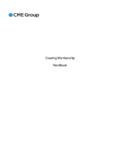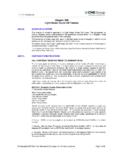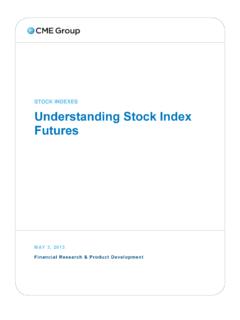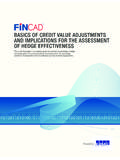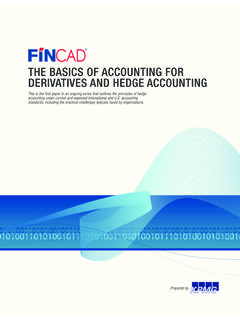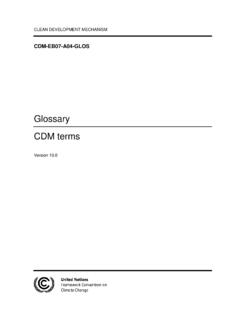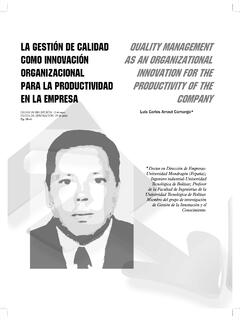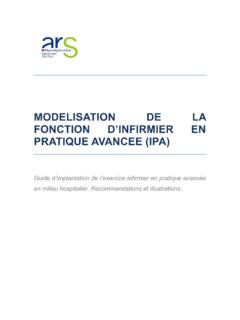Transcription of Understanding Treasury Futures - CME Group
1 Understanding Treasury FuturesNOVEMBER 2017 Nicholas JohnsonEconomist Research & Product DevelopmentJohn KerpelManager Research & Product DevelopmentJonathan Kronstein Senior Director Research & Product DevelopmentINTEREST RATEST able of ContentsTreasury Cash Market Basics Coupon-Bearing Treasury Securities .. 1 Price/Yield Relationship .. 1 Quotation Practices .. 2 Accrued Interest and Settlement Practices .. 2 Treasury Auction Cycle .. 3 The Run .. 3 The Roll and Liquidity .. 4 Repo Financing .. 4 Treasury Cash & Futures RelationshipsTreasury Futures Delivery Practices .. 5 Conversion Factor Invoicing System .. 5 Cheapest-to-Deliver .. 6 The Basis .. 6 Why Is One Issue CTD? .. 8 Conversion Factor Effects .. 8 Implied Repo Rate .. 9 Basis Optionality ..10 Hedging with Treasury FuturesMeasuring Risk.
2 11 Basis Point Value (BPV) ..11 Duration ..12 Risk Management ..12CF Weighted Hedge ..12 BPV Weighted Hedge ..13 Crossover Risks ..14 Portfolio Hedging ..15 Bullets and Barbells ..16 Comparing Returns of Cash to Futures & Repo ..17 The Delivery Timetable for Treasury Futures ..18 Treasury Futures Contracts Summary ..19 December 2017 Ten-Year T-Note Futures Basis .. 20 Understanding Treasury Futures1 Treasury Bond Futures were introduced on the chicago Board of Trade in 1977 . The Treasury Futures product line has been augmented over the years by the introduction of Ultra 10-year, 10-year, 5-year, 2-year Treasury note and Ultra Treasury bond Futures .1 This product line has experienced tremendous success as the scale and global significance of U .S . Treasury investment has grown over the years.
3 Today, these products are utilized on an international basis by institutional and individual investors for purposes of both abating and assuming risk exposures . This document is intended to provide an overview of the fundamentals of trading U .S . Treasury bond and note Futures . We assume only a cursory knowledge of coupon-bearing Treasury securities . Thus, we begin with a primer on the operation of cash Treasury markets before moving on to provide some detail regarding the features of the U .S . Treasury Futures contracts as well as a discussion of risk management applications with U .S . Treasury Futures . Coupon-Bearing Treasury Securities U .S . Treasury bonds and notes represent a loan to the U .S . government . Bondholders are creditors rather than equity- or share-holders . The U .S . government agrees to repay the face or principal or par amount of the security at maturity, plus coupon interest at semi-annual intervals.
4 Treasury securities are often considered riskless investments given that the full faith and credit of the U .S . government backs these securities . The security buyer can either hold the bond or note until maturity, at which time the face value becomes due; or, the bond or note may be sold in the secondary markets prior to maturity . In the latter case, the investor recovers the market value of the bond or note, which may be more or less than its face value, depending upon prevailing yields . In the meantime, 1 Treasury Note and Bond Futures are listed for trading on and subject to the rules and regulations of the Board of Trade of the City of chicago , Inc. (CBOT). CBOT lists Futures on Treasury securities covering a broad set of maturities, including the benchmark 10-Year Treasury Note Futures .
5 CME Group is the parent of four based Futures exchanges that are registered under the Commodity exchange Act ( CEA ) with the CFTC as designated contract markets ( DCMs ): chicago mercantile exchange ( CME ), the Board of Trade of the City of chicago , Inc. ( CBOT ), New York mercantile exchange , Inc. and Commodity exchange , Inc. (collectively, the CME Group Exchanges or Exchanges ).the investor receives semi-annual coupon payments every six months . Treasury Futures Avg Daily Volume2004200520062007200820092010201120 12201320142015201620172-Year (TU)5-Year (FV)10-Year (TY)T-Bond (US)Ultra T-Bond (UB)Ultra-10 (TN)0500,0001,000,0001,500,0002,000,0002 ,500,0003,000,0003,500, , you purchase $1 million face value of the 2-1/4% note maturing in August 2027 . This security pays half its stated coupon or 1-1/8% of par on each six-month anniversary of its issue.
6 Thus, you receive $22,500 (= 2-1/4% of $1 million) annually, paid out in semi-annual installments of $11,250 in February and August . Upon maturity in August 2027, the $1 million face value is re-paid and the note expires . Price/Yield Relationship A key factor governing the performance of bonds in the market is the relationship of yield and price movement . In general, as yields increase, bond prices will decline; as yields decline, prices rise . In a rising rate environment, bondholders will witness their principal value erode; in a decline rate environment, the market value of their bonds will increase .IF Yields Rise THEN Prices Fall IF Yields Fall THEN Prices Rise This inverse relationship may be understood when one looks at the marketplace as a true auction . Assume an investor purchases a 10-year note with a 2% coupon when yields are at 2%.
7 Thus, the investor pays 100% of the face or par value of the security . Subsequently, rates rise to 3% . The investor decides to sell the original note with the 2% yield, but no one 2will pay par as notes are now quoted at 3% . Now he must sell the note at a discount to par in order to move the note . I .e ., rising rates are accompanied by declining prices . Falling rates produce the reverse situation . If rates fall to 1%, our investment yields more than market rates . Now the seller can offer it at a premium to par . Thus, declining rates are accompanied by rising prices . Should you hold the note until maturity, you would receive the par or face value . In the meantime, of course, one receives semi-annual coupon payments . Quotation Practices Unlike money market instruments (including bills and Eurodollars) that are quoted on a yield basis in the cash market; coupon-bearing securities are frequently quoted in percent of par to the nearest 1/32nd of 1% of par.
8 , one may quote a bond or note at 97-18 . This equates to a value of 97% of par plus 18/32nds . The decimal equivalent of this value is 97 .5625 . Thus, a one million-dollar face value security might be priced at $975,625 . If the price moves by 1/32nd from 97-18 to 97-19, this equates to a movement of $312 .50 (per million-dollar face value) . But often, these securities, particularly those of shorter maturities, are quoted in finer increments than 1/32nd . For example, one may quote the security to the nearest 1/64th . If the value of our bond or note in the example above were to increase from 97-18/32nds by 1/64th, it may be quoted at 97-18+ . The trailing + may be interpreted as +1/64th .Or, you may quote to the nearest 1/128th . If our note were to increase from 97-18/32nds by 1/128th, it might be quoted on a cash screen as 97-182.
9 The trailing 2 may be read as +2/8ths of 1/32nd; or, 1/128th . If the security rallies from 97-18/32nds by 3/128ths, it may be quoted as 97-186 . The trailing 6 may be read as +6/8ths of 1/32nd or 3/128ths . Sometimes, quotation systems use an alternate fractional reference . , the value of 97-182 might be displayed as 97-18 . Or a value of 97-18+ might be displayed as 97-18 . A value of 97-186 might be displayed as 97-18 . Futures quotation practices are similar but not entirely identical . A quote of 97-182 is the same no matter whether you are looking at a cash or a Futures quote . It means 97% of par plus 18/32nds plus 1/128th . Quotation PracticesCash Price MeansDecimal Equivalent (% of Par) Futures Quote 97-1897-18/32nds97 .5625000 97-18 97-182 or 97-18 97-18/32nds + 1/128th97 .570312597-182 97-18+ or 97-18 97-18/32nds + 1/64th97.
10 578125097-185 97-186 or 97-18 97-18/32nds + 3/128ths97 .585937597-187 But in the case of the cash markets, that trailing 2 means 2/8ths of 1/32nd = 1/128th . In the case of the Futures markets that trailing 2 represents the truncated value of 0 .25 x 1/32nd or 1/128th . A quote of 97-18+ in the cash markets is equivalent to 97-185 in the Futures market . That trailing 5 represents 0 .5 x 1/32nd or 1/64th . A quote of 97-186 in the cash markets is equivalent to 97-187 in the Futures market . The trailing 7 represents the truncated value of 0 .75 x 1/32nd = 3/128ths .The normal commercial round-lot in the cash markets is $1 million face value . Anything less might be considered an odd-lot . However, you can purchase Treasuries in units as small as $1,000 face value . Of course, a dealer s inclination to quote competitive prices may dissipate as size diminishes.
